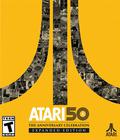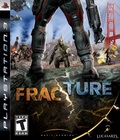Pacifican Sherman
While mobility and agility are proven assets on the battlefield, intelligence is reporting that Pacifican military forces are becoming more desperate in their attempts to field worthwhile soldiers. One such experiment soldier is the Pacifican Sherman, dubbed in homage to the brute-like 20th century tank of the same name. Regardless of influence, the Sherman has so far proven to be one of the most formidable opponents Atlantic Alliance troops will face in the field.
Little information is available on the Sherman’s genetic makeup – both human and animal. Their characteristic green “glow” is the by-product of combining these DNA samples with XP-61, a poison highly toxic to 100% humans.
The Sherman has been genetically modified to the point where its actual body has become a weapon. Using means still unknown to us, the Sherman’s arm has been replaced with a bio-engineered grenade launcher that is capable of lobbing projectiles a great distance across the battlefield. To add to its lethality, the projectiles are made up of an explosive housing that contains both shrapnel and XP-61. Separately, these two elements post only a slight hazard to infantry, but when paired they constitute a deadly threat. Soldiers injured by the shrapnel will find their wounds coated in the toxic XP-61, resulting in extreme burning and genetic damage.
While the Sherman’s exo-suit shares similarities to that worn by the seemingly invincible Invader, heavier firepower is more than capable of bringing the unit down. But, the Sherman possesses one more weapon in its arsenal. When dead, the lack of electro-magnetic signals from the Sherman’s nervous system causes the XP-61 in its body to become extremely unstable, eventually resulting in its spontaneous combustion. The result is an explosive blast that can prove fatal to anyone in close proximity.
Pacifican Light
When General Nathan Sheridan calls on the people of the Pacifican states to protect their homeland against the Atlantic Alliance, he is immediately inundated with volunteers. While the large majority of Pacificans are genetically modified, most are everyday citizens going about their daily lives with little to no interest in getting involved in a major war. The young and idealistic, however, are more than willing to undergo further genetic enhancement to protect their way of life, and these throngs of young soldiers make up the bulk of the Pacific Dragoon Light forces.
While the majority of the Pacifican Dragoon Light units have had little training, they more than make up for their lack of combat time with an eagerness and dedication that belies their lack of battle experience. Often volunteering for the most dangerous missions, those that are usually considered suicidal, the Dragoon Light stands above all other Pacifican troops when it comes to sheer tenacity and numbers.
The Pacifican Dragoon Light has been genetically enhanced to increase its overall reaction time and battlefield awareness. This heightened sense of being allows the Dragoon Light to remain calm in the face of even the most chaotic firefights, as well as identify and dodge attacks other enemies would find unavoidable. While they wear no specialized protective armor, they are able to wield both the Pacifican rifle and the Atlantic Alliance Bulldog in the field, making them deadly in both ranged and close-quarters engagements.
Pacifican Medium
While the call for Pacifican volunteers was largely answered by the young and inexperienced, General Nathan Sheridan benefits from being able to enlist into his ranks soldiers already experienced in the ways of war. These soldiers largely fill the ranks of the Pacifican Invader Medium, a group of grizzled veterans that bring to the battlefield a code of honor and expertise that immediately make them a valuable asset to the Pacifican army.
Designed to serve the role of armored infantry, the Pacifican Invader Medium is mainly found defending the most valuable and vulnerable of Pacifican bases and locations. Able to wield both the Pacifican Rifle and Invader Shotgun, their combat skills lend themselves well to both long-range firefights and close proximity skirmishes. Their previous war-time experience also makes them excellent strategists, confusing the enemy with advanced tactics.
To protect this most vital of soldier, the Pacifican Invader Medium is encased in a living suit of armor capable of quickly regenerating itself on the battlefield, making it one of the most combat-ready of the Pacifican troops. Its unique armor allows it to shrug off damage from small to medium arms fire, while special carapace forms protects its vital organ areas. While the suit is capable of significant regeneration, focused and heavy damage will eventually render the shield ineffective and leave the soldier vulnerable. To complement the protective abilities of the armor, the Invader is also genetically modified with organic fibers that increase its muscle mass, resulting in a soldier with increased endurance, strength and speed. Recent reports from the field, however, indicate that while the Pacifican Invader’s advanced armor may prove to be difficult to penetrate with conventional tactics, the unit does feature a weak spot – the head.
Pacifican Hydra
Realizing that brute-strength troops would only go so far in the fight against the Atlantic Alliance, General Nathan Sheridan brought back to life a pre-War genetic program aimed at creating soldiers genetically modified to be the ideal assassins. The Pacifican Hydra Medium is the result of that campaign.
While other Pacifican troops rely on genetics designed to keep them alive, the Hydra Medium has been genetically modified to increase its overall mobility on the field of battle. Outfitted with the Genetic Jump Enhancer, or Jackhammer, Hydra Medium soldiers display extraordinary prowess and agility on the battlefield, executing incredible dives and multi-story jumps. These tactics results in a unit that is extremely difficult to damage with conventional firepower and one that can quickly traverse the field in little time. Their specialized exo-suits are also designed specifically to complement their high degree of mobility, providing the highest degree of freedom of movement.
Added to the already deadly agility of the Hydra Medium is the weapon that it brings into battle – the Bangalore Rocket Launcher. A weapon with devastating power, the Hydra Medium can decimate ground-based troops by utilizing a “jump and fire” strategy that effectively makes the soldier difficult to hit, while also widening the area of impact for its fired payload rocket. The Hydra Medium’s skills and expertise make it a highly honored and revered Pacifican unit.
Pacifican Invader
While the Pacifican forces are largely made up of the all-purpose Dragoon infantry unit, which are adept in general combat situations, recent intelligence has unveiled an entirely new unit – the Pacifican Invader. Representing the latest in Pacifican genetic research and weapons advancement, the Invader is a force to be reckoned with on the battlefield.
Pacifican research has made leaps and bounds in the field of exo-suit technology in the pursuit of a perfect symbiotic product that not only protects the wearer from damage sustained during combat, but also one that can self-repair in the field and even monitor key vital statistics. The result encases the Invader is a seemingly impenetrable armor that intelligence reports can nullify entirely small arms fire. Reports have indicated, however, that the Invader does have a single weak point that must be exploited in order to defeat it.
The Invader is best suited for close-quarters combat and carries the appropriately named Invader Shotgun into battle. At close range the weapon is devastating and to ensure that damage is maximized, the Invader carefully plans its engagements and strikes only when enemy units are in close proximity. Given the Pacifican Invader’s seemingly invincible status, the unit benefits from an increased psychological impact on enemy forces and is an indispensable Pacifican asset.
Fracture is scheduled for release in North America on October 7, 2008 (Oct. 10 in Europe).
More articles about Fracture











 In addition to extraordinary weaponry that allows players to do things previously only imagined, each side of the conflict, Pacifica and the Atlantic Alliance, boast soldiers with powers beyond those of ordinary men. Genetic augmentations provide Pacifican forces with amazing abilities, while Atlantic Alliance soldiers like Briggs counter the threat with the more "traditional" method: cybernetics. The differing states of superhumanity result in balanced yet stylistically different combat tactics that have never been seen before.
In addition to extraordinary weaponry that allows players to do things previously only imagined, each side of the conflict, Pacifica and the Atlantic Alliance, boast soldiers with powers beyond those of ordinary men. Genetic augmentations provide Pacifican forces with amazing abilities, while Atlantic Alliance soldiers like Briggs counter the threat with the more "traditional" method: cybernetics. The differing states of superhumanity result in balanced yet stylistically different combat tactics that have never been seen before.


